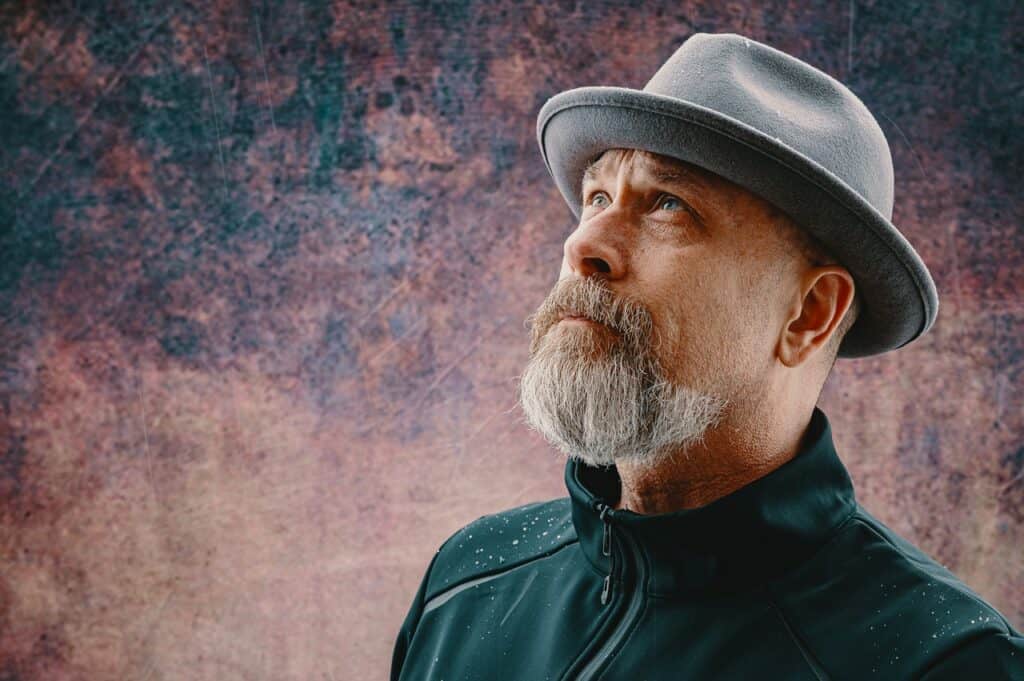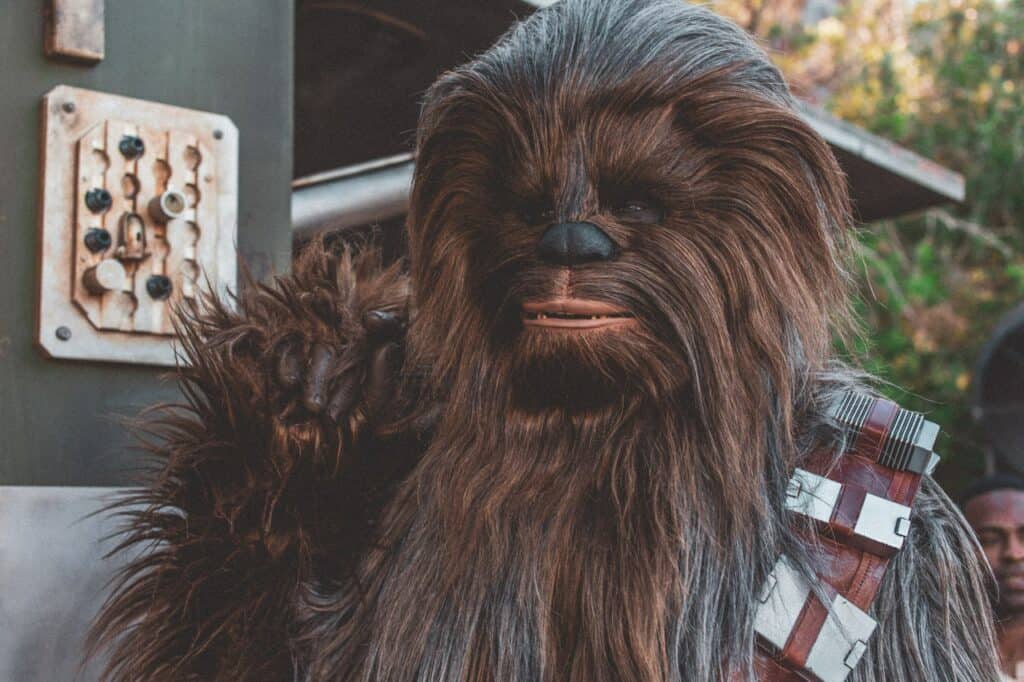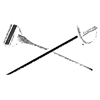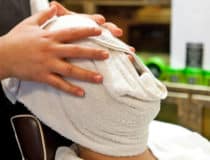How To Get Thicker Hair

Relax. You’re not alone.

Most adult men of a certain age have experienced The Moment. The one where a friend returning from the loos in the pub casually observes that you’ve got a bit of a bald spot coming on, and your blood runs cold.
Or the one where you look at an old photo of yourself and are shocked to realise that your hairline wasn’t M-shaped back then.
Or that first time you look in a mirror in a shopping centre bathroom and notice the cruel, white lights piercing through your barnet to expose furrows of naked scalp beneath. Horrifying.
The realisation that your once-lustrous mane is now thinning is not a pleasant one. Although we at the Bearded Colonel don’t strictly agree, for many men a lush head of hair is a vital sign of masculinity. Either way, thinning hair can be a deeply stressful experience for us as blokes, wrecking our self-esteem whilst at the same time feeling like a cruel reminder of our mortality and waning youth.
But not to worry. If you’ve found yourself facing down unwanted hair loss, you do have options. Whilst in general we would absolutely recommend addressing any psychological or emotional aspects with a licensed therapist, and whilst we are also of the belief that baldness can be an awesome look well worth embracing, in this article we’ll be showing you how to get thicker, healthier hair if that’s what you’re after.
The strategies we’ll share apply equally to those of you who aren’t experiencing hair loss but would just like to get a thicker mop up top. Before we jump into that, it’s worth understanding a little bit about hair thickness and hair growth.

What do we mean when we talk about thickness?
We know what thick hair looks like, we’ve seen it in countless shampoo commercials. But what actually makes it thick? Well, there are two components:
- The width of individual hairs and individual hair follicles. Individual strand width generally falls within 17 and 180 micrometers (that’s 1/1000 of a millimetre). Your genetics will often determine whether you have fine hair or thicker hair, although hair health and nutrition can also be key contributors.
- Hair density – that is, the number of strands per square inch of scalp. This figure naturally grows smaller as we grow into adulthood – our scalp grows bigger, but we are born with all the hair follicles we’ll ever have (about 100,000 in total).
Both of these play into overall hair thickness (with hair density arguably the more significant factor of the two), and are themselves determined by a combination of genetics, health, nutrition, and age.
What causes hair to thin?
Well, if a nice thick mop can be sustained by good health and nutrition, a reversal in those elements (e.g. a deficiency in vitamins) can lead to limp, unhealthy hair, and even hair loss.
Hair loss can also be a sign of stress. Stress can trigger telogen effluvium, a condition that results in the temporary shedding of hair.
We’ll get into some of these causes in a bit more detail later, but for now let’s touch upon the big boogeyman of hair loss: male pattern baldness.
Male pattern baldness (androgenetic alopecia, to give it its proper name), is said to affect up to 85% of men to some extent by the age of fifty. It’s a natural process caused by the hormone dihydrotestosterone (DHT), a byproduct of good old manly testosterone. DHT causes your hair follicles (a tunnel-like structure in your scalp that houses individual strands) to shrink over time. As the hair follicles shrink, the life-cycle of that follicle’s strand of hair grows shorter and shorter until eventually, the follicle stops producing hair altogether.

Sadly, DHT has a tendency to target the hair on your scalp and not your body hair. It’s a shame because there’s a ton of unwanted body hair we’d gladly see the back of.
Over time this process results in thinning hair, leading to the dreaded bald spot on your crown and a hairline that seems determined to shrink as far away from your face as it can.
Whilst hair loss can’t ultimately be prevented, hair thinning can be mitigated and in most cases, you can certainly take steps to make your hair look thicker. Before we get into how; we do need to clear up one nagging myth.
Does shaving make hair grow thicker?
This is one of those persistent medical myths that has stuck around more stubbornly than the local boozehound at chucking-out time. It’s false that hair grows back thicker post-shave, whether we’re talking about the hair on your face or on your scalp.
While other hair removal methods (such as laser hair removal or waxing) target the hair at its root beneath the skin, when you shave you’re cutting away dead hair above the skin’s surface. This has absolutely no impact on hair regrowth.
We think this myth has its origins in how your beard stubble looks after you shave.
Unshaven hair tends to narrow to a fine, blunt tip. When you shave these tips away, you’re cutting individual hairs down to their thicker base, which might make the hair regrowth look thicker and darker. The new hair may also look darker due to the fact that it hasn’t yet been exposed to elements such as sunshine that may cause it to lighten.
(While we’re on the topic if you are after a better shave, why not try one of our razors? We build them using top-quality blades so that you’re guaranteed the smoothest, cleanest shave possible. It’s the reason our razors are adored by men and women alike.)
Okay so now that we’ve established that shaving doesn’t make your hair grow back thicker (and given our razors a cheeky plug in the process), let’s get down to the reason you’re here.

Tips To Get Thicker Hair
1. Choose the right shampoo and conditioner
While shampoos and conditioners that promise to ‘volumise’ or thicken hair are not proven to affect hair thickness in the long term, they may make it look and feel thicker in the short term.
Other shampoos target and nourish hair follicles directly, which may in turn support healthy hair growth and give you thicker, healthier-looking hair.
Dry shampoo is also an option for increasing volume, but beware: there have been concerns that it can cause hair loss.

2. Check your nutrition
In the same way it’s so important for good skin and a well-functioning body, your diet has a massive effect on your hair’s health. Amino acids such as cysteine, lysine, methioine and arginine stimulate healthy hair growth; whilst certain vitamins such as B1, B2, B5, B6, B12, D, and E are important for your hair’s upkeep (B12 may help to prevent hair loss).
Hair is over 90% protein (largely keratin), so ensuring that you receive sufficient proteins, amino acids, and fatty acids is important. Supplements could be a good idea, but please do not take any without consulting a doctor first.

3. Try olive oil
Although not robustly proven by science, many swear by olive oil as a remedy that will make hair look thicker and healthier. Olive oil is packed with nutrients, so applying it to your scalp may well be a way to add some lustre to tired, limp-looking hair. Don’t forget to rinse it out. Olive oil has also been shown to help with hair growth.
Another option is argan oil, which is available in many chemists and health stores.

3. Be gentle
This is more of a preventative measure, but take care not to be too rough when you rinse or dry your hair.
This can damage your hair which in turn can make it feel coarse and unpleasant. It’s also worth bearing in mind that shampooing can rob your hair of the natural oil it needs to remain healthy, so be careful not to over-shampoo either.
4. Change up your style
If you’re finding that thin hair isn’t a great look, consider changing your hairstyle. The particular haircut you have and the way you brush or part your hair can massively affect the appearance of your hair and how much skin you’re showing beneath it (as an extreme example of this, think of how a combover works). Ask your hair stylist for tips. Also getting them to recommend suitable hair thickening products might be a good shout – having the right mousse or gel could work wonders for your hair thickness.
5. Throw in some colour
Another tactical fix is colour. Not only will the dye itself physically thicken your hair strands, choosing the correct colour can reduce the contrast between the skin on your scalp and your hair. Sneaky.

6. Over the counter hair growth products
An increasingly popular treatment choice in recent years has been OTC hair growth products. The most famous of these is Rogaine. Peer reviewed studies have shown that minoxidil (the active ingredient in Rogaine) successfully promotes hair regrowth versus a placebo.
Given the plucky little chemical’s success in a double blind, placebo controlled trial, it’s worth keeping an eye out for products that specifically contain minoxidil. Just be warned though, it might take up to six months to see results, and stopping minoxidil treatment can result in the loss of newly regrown hair.
7. Prescription medication
Another option is to go for a prescription treatment, a notable one being Propecia which contains the active ingredient finasteride.
Treatment with finasteride has also been proven in studies to slow down hair loss, but it may not be able to grow hair back where it has been permanently lost.

8. Get some new hair
If all else fails, hair replacement surgery is an option. It’s a treatment that involves a doctor transplanting hair from one part of your body onto your scalp. It’s an increasingly popular option that has seen a boom in recent years, however it does tend to cost a pretty penny.
May the follicles be with you
Hopefully you can now breathe a sigh of relief as you realise that a bit of thinning up top needn’t be the end of the world. There are plenty of things you can do to keep your hair looking healthy, stylish, and youthful. Failing all that, you always have the fallback option of shaving your head down to the skin and buying some horrifying wigs to frighten the local kids with. Which if we’re honest, sounds a lot more fun than massaging your scalp with olive oil every week.


You might like these!



